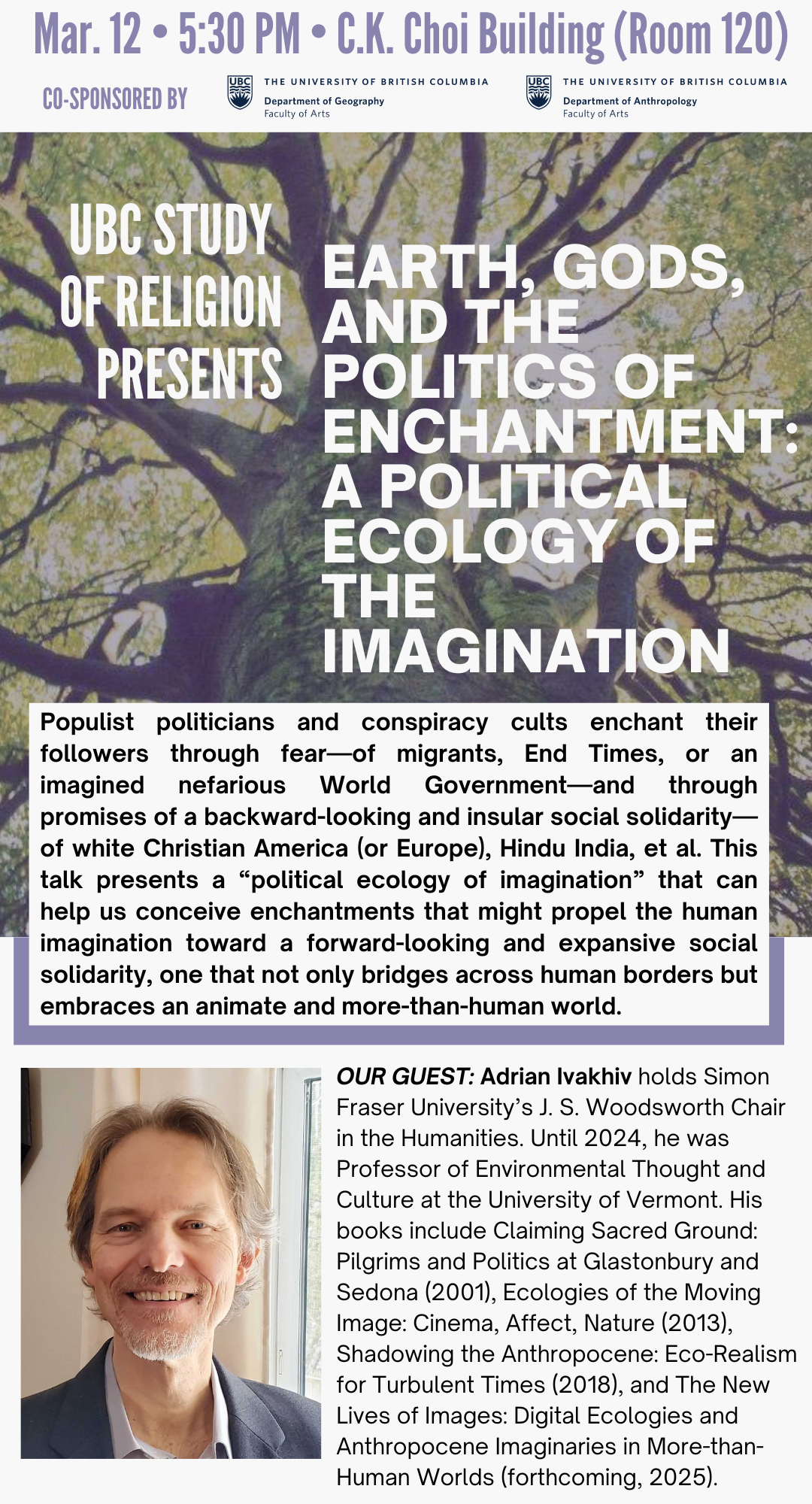Introduction to the Program
News

Populist politicians and conspiracy cults enchant their followers through fear—of migrants, End Times, or an imagined nefarious World Government—and through promises of a backward-looking and insular social solidarity—of white Christian America (or Europe), Hindu India, et al. This talk presents a “political ecology of imagination” that can help us conceive enchantments that might propel the human imagination toward a forward-looking and expansive social solidarity, one that not only bridges across human borders but embraces an animate and more-than-human world.

This presentation examines the representation of power encoded within the bounded communities (Guha 2013) denoted by the English term, “caste” in eighteenth century Punjab, connecting it to broader discourses and dynamics of power related to caste in eighteenth-century north India.

This paper will analyse the portrayal of Judas's death in early Christian traditions, focusing on how his body is a locus of early Christian notions of death, hell, and fat-shaming. It examines the ekphratic and violent way in which early Christian authors "killed Judas," beyond the terse portrayals in canonical Christian gospels.

The ritual preparation of the Maypole for Glastonbury’s Beltane festival is a complex process, involving four separate rituals spread over seven weeks prior to the day itself. In this presentation I examine this process in detail and describe the nature of Glastonbury’s Green Men, an all-male ritual group tasked with this sacred responsibility. The Green Men embody a specific vision of sacred masculinity, within a religion, Neo- Paganism, in which it is the divine feminine which is more typically prioritized. This presentation examines how concepts of gender and community are both challenged and reconciled in the preparation for the Beltane rites at Glastonbury.

My talk will focus on the role Catholic priests and women associated with the YWCA played during a violent attack by the South Korean military on the South Korean city of Gwangju in May, 1980. I will ask why they were arrested, but Protestant pastors and Buddhist monks were not.




